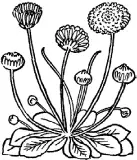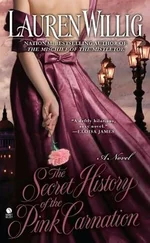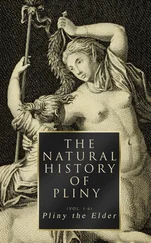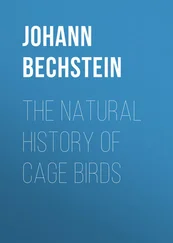1 ...6 7 8 10 11 12 ...21 The geography has changed profoundly since I first entered the British Museum (Natural History). Science departments have been rehoused – my own department, Palaeontology, being the first of them. I had to say goodbye to my polished cabinets, balconies and nineteenth-century haven to relocate to the third floor of the rather characterless modern block tacked on to the eastern end of the old building, an extension as typical of the utilitarian (some might say cheap) 1970s as the old building had been typical of the Victorian love of detail. The relevant minister, Shirley Williams, opened the new wing in 1977. Moreover, the space was generous, and necessary, because the palaeontologists had formerly been dotted all over the place; now they could be together. The Zoology Department, including all those sad fish, has been moved to the much more glamorous Darwin Centre at the western end of the building. Farewell to the Spirit Building, and to its dusty and slightly romantic gloom. Only my old friends the molluscophiles are still secreted in their old haunts in the basement. Nonetheless, the sense of the three-dimensional maze has not been lost. The whole thing just got bigger. Gormenghast lives on.
On one of my forays through the basement I came across a door that I had not noticed before. This was on a corridor with an air of being seldom visited on one side of which were tucked away the osteology collections – bones, dry bones, where oxen strode naked of their skin and muscles, and great bony cradles hung from the ceiling, the jawbones of whales. Here, ape and kangaroo met on equal terms in the demotic of their skeletons, with no place for the airs and graces of the flesh. Strange though these collections might seem, they were as nothing compared with what lay behind the mysterious door opposite. For this was Dry Store Room No. 1. Neglected and apparently forgotten, this huge square room entombed the most motley collection of desiccated specimens. Fishes in cases were lined up species by species in their stuffed skins; they were presented in faded ranks like a parade that had forgotten the bunting. At one end there was a giant fish that seemed to have been cut off mid-length, such that the posterior part of its body was apparently missing, and it had a silly little mouth out of proportion to its fat body. It was a sunfish, and its cut-off appearance was entirely natural – a faded notice attached to it proclaimed it was the ‘type’. Elsewhere there were odd boxes, one of which contained human remains, laid out in a kind of slatted coffin. The shells of a few giant tortoises hunkered down like geological features on the floor. There were sea urchin shells, and some skins or pelts of things I couldn’t identify. Most peculiar of all, on top of a glass-fronted cupboard there was a series of models of human heads. They were arranged left to right, portraying a graded array of racial stereotypes. One did not have to look at them for very long to realize that there was a kind of chain running from a Negroid caricature on one side to a rather idealized Aryan type on the other. This was a remnant of an old exhibit, heaven knows from what era, with more than a sniff of racism about it. Dry Store Room No. 1 was a kind of miscellaneous repository, a place of institutional amnesia. It was rumoured that it was also the site of trysts, although love in the shadow of the sunfish must have been needy rather than romantic. Certainly, it was a place unlikely to be disturbed until it was dismantled. I could not suppress the thought that the store room was like the inside of my head, presenting a physical analogy for the jumbled lumber-room of memory. Not everything there was entirely respectable; but, even if tucked out of sight like suppressed memories, these collections could never be thrown away. This book opens a few cupboards, sifts through a few drawers. A life accumulates a collection: of people, work and perplexities. We are all our own curators.



In 1976 I almost burnt down the Smithsonian Institution in Washington. If I had succeeded I imagine that I would now be one of the most famous scientists in the world. Thirty years ago I was a pipe smoker, and the study cubicles in the National Museum of Natural History in the Smithsonian allowed scholars to puff away at their pipes while looking down the microscope. It somehow seemed an appropriate thing to permit. Behind the scenes at the Smithsonian lies a similarly vast labyrinth to that in our Natural History Museum and here, too, are ranks of collections, quietly minding their own business until a visiting expert re-examines them in their labelled drawers. I was interested in looking at trilobite specimens collected years before by one of their staff, E. O. Ulrich. I had my microscope in front of me, and a line of specimens to one hand, while the other picked up the pipe from time to time, and waved it about. It was about as contented a scene as could be imagined. At the end of the day I did what pipe smokers do, which is to tap out the dead pipe into the metal waste-paper bin in the corner of the room. The only problem was that the pipe was not completely dead; I had deposited smouldering scraps of Erinmore Mixture among the discarded pieces of paper in the bin. I shut up for the night and went home. Half an hour later, a passing security man noticed billowing smoke arising from my cubicle; fortunately, the fire was quickly extinguished. It might have been a different story had the receptacle been a woven basket. I overheard mumbled gossip about me for the next few days.
Had I destroyed the United States’ national collections of natural history the damage would have been irreparable, not just for the USA but for the world. The most important single feature of the great collections is that they form the basis for naming the living world. They are the reference system for nature. The curated specimens are the ground truth for the scientific names of animals, plants and minerals. The naming of organisms is called taxonomy, and their arrangement in classificatory order is called systematics. All those cabinets I passed when I explored the Natural History Museum in London were the storehouses for the still-growing catalogue of what is now often termed biodiversity, the richness of the living world. Although it achieves a lot besides, the basic justification of research in the reference collections of natural history museums is taxonomic. So if my Erinmore Mixture had sparked off a major conflagration much of the basis for the names given to fauna and flora around the world would have gone up in smoke. It would have taken years to sort out. Some museums were bombed during the Second World War, such as the Humboldt Museum in Berlin, and lost many specimens; the resulting taxonomic confusion is still being worked out. That is why museums place such emphasis on the security of their collections; it is an acknowledgement of their permanence: hence the special keys and the security codes.
The taxonomic mission can be briefly stated: to make known all the species on Earth. It sounds easy. This is, of course, only the beginning of finding out about life, because there lies beyond identification so much more, such as how animals live – their ecology – or why there are different species in different parts of the world. Often the taxonomy is inextricably entwined with these other aspects, for example, when two closely related species may be distinguished by having subtly different ecology. European ornithologists will know the instance of the exceedingly similar marsh ( Parus montanus ) and willow ( Parus palustris ) tits, which are readily distinguishable only by their songs. Recognition of species is always the first step in understanding the complex interactions of the biological world. Just as you need a vocabulary before you can speak a language, so it is necessary to have a dictionary of species before you can read the complex book of nature.
Читать дальше















